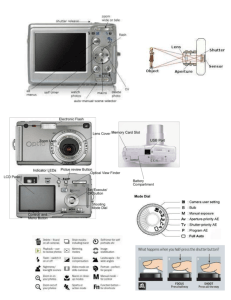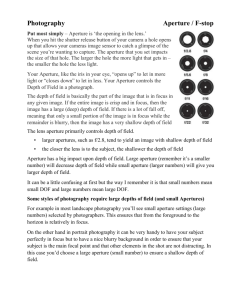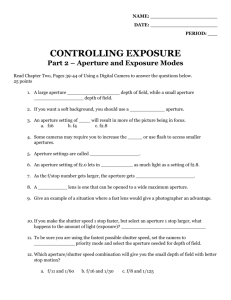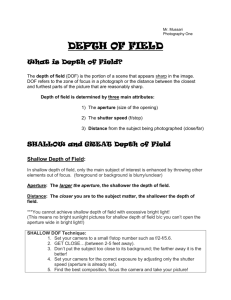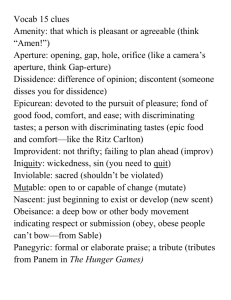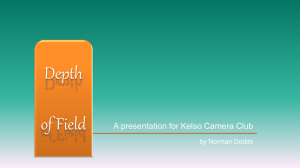What is Aperture
advertisement
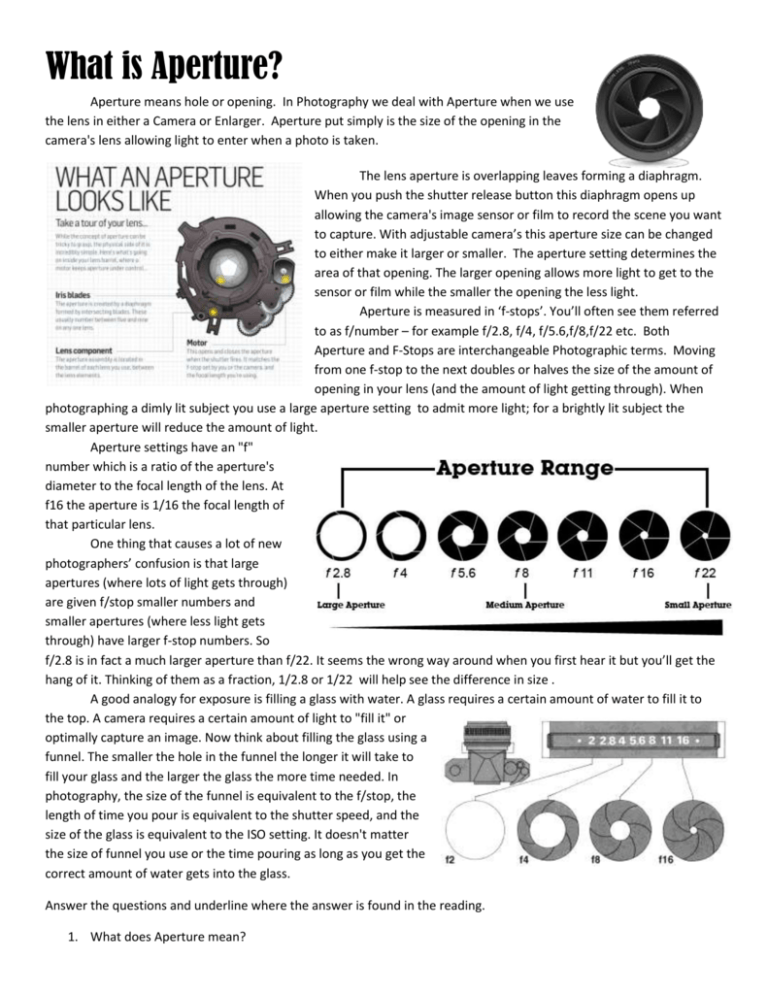
What is Aperture? Aperture means hole or opening. In Photography we deal with Aperture when we use the lens in either a Camera or Enlarger. Aperture put simply is the size of the opening in the camera's lens allowing light to enter when a photo is taken. The lens aperture is overlapping leaves forming a diaphragm. When you push the shutter release button this diaphragm opens up allowing the camera's image sensor or film to record the scene you want to capture. With adjustable camera’s this aperture size can be changed to either make it larger or smaller. The aperture setting determines the area of that opening. The larger opening allows more light to get to the sensor or film while the smaller the opening the less light. Aperture is measured in ‘f-stops’. You’ll often see them referred to as f/number – for example f/2.8, f/4, f/5.6,f/8,f/22 etc. Both Aperture and F-Stops are interchangeable Photographic terms. Moving from one f-stop to the next doubles or halves the size of the amount of opening in your lens (and the amount of light getting through). When photographing a dimly lit subject you use a large aperture setting to admit more light; for a brightly lit subject the smaller aperture will reduce the amount of light. Aperture settings have an "f" number which is a ratio of the aperture's diameter to the focal length of the lens. At f16 the aperture is 1/16 the focal length of that particular lens. One thing that causes a lot of new photographers’ confusion is that large apertures (where lots of light gets through) are given f/stop smaller numbers and smaller apertures (where less light gets through) have larger f-stop numbers. So f/2.8 is in fact a much larger aperture than f/22. It seems the wrong way around when you first hear it but you’ll get the hang of it. Thinking of them as a fraction, 1/2.8 or 1/22 will help see the difference in size . A good analogy for exposure is filling a glass with water. A glass requires a certain amount of water to fill it to the top. A camera requires a certain amount of light to "fill it" or optimally capture an image. Now think about filling the glass using a funnel. The smaller the hole in the funnel the longer it will take to fill your glass and the larger the glass the more time needed. In photography, the size of the funnel is equivalent to the f/stop, the length of time you pour is equivalent to the shutter speed, and the size of the glass is equivalent to the ISO setting. It doesn't matter the size of funnel you use or the time pouring as long as you get the correct amount of water gets into the glass. Answer the questions and underline where the answer is found in the reading. 1. What does Aperture mean? 2. Where would you find apertures? 3. What will a large aperture allow in? 4. What will a small aperture allow in? 5. What two Photographic terms are interchangeable? 6. What kind of aperture do you need for a dimly lit scene? 7. What kind of aperture do you need for a brightly lit scene? 8. What is a “F” number a ration of? 9. Which is a larger F/Number (lets more light in), F/22 or F/2? 10. Match the following f/numbers to the size of their opening? f/22 f/16 f/2.8 f/8 f/5.6 f/11

